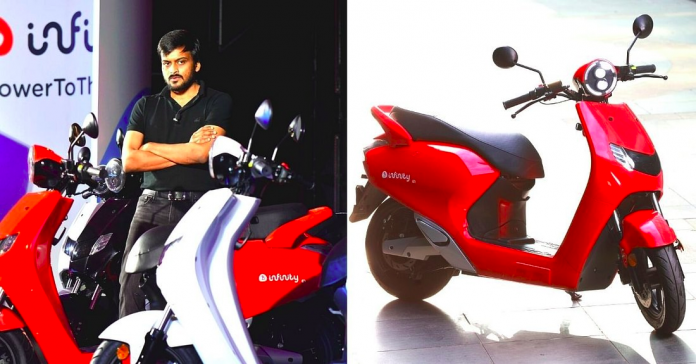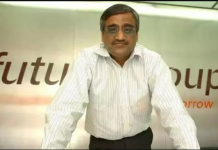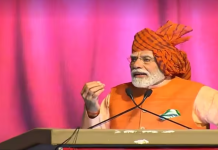Earlier this month, Bounce, a Bengaluru-based electric mobility startup, launched its first consumer electric scooter, Bounce Infinity E1, which comes with a unique feature. This is India’s first e-scooter that doesn’t necessarily come with batteries and thus needs no charging. Offered with a ‘battery as a service’ option, this e-scooter will be available to consumers at Rs 45,099 (Delhi ex-showroom), while they can pre-book it for a refundable amount of Rs 499. Deliveries are slated for March 2022 through its dealership network and its online platform.
But what does a ‘battery as a service’ option entail? The Better India spoke to Vivekananda Hallekere, the CEO and co-founder of Bounce to understand this unique feature.
“The recently launched Bounce Infinity E1 offers a unique ‘Battery as a service’ option – the first-of-its-kind in the Indian market. Here, customers have the choice of acquiring the Bounce Infinity E1 at an affordable price with ‘battery-as-a-service’ and using Bounce’s battery swapping network instead. Customers pay for battery swaps, whenever they swap an empty battery with a fully-charged one from Bounce’s swapping network. This pushes the running costs of the scooter down substantially, by as much as 40% compared to conventional scooters,” he claims.
So far, the startup claims that its battery-swapping station network has a distribution of close to 200 stations in major Indian cities like Delhi-NCR and Bengaluru which have completed over 500,000 swaps and enabled over 2 crore EV kilometres.
“Bounce is set to invest over USD 100 million across manufacturing of e-scooters and expanding the battery swapping infrastructure over the next 12 months. We’ve been setting up a wide battery-swapping network through prominent partnerships, which will serve both its retail customers and its successful ride-sharing business. The ambition is to build the world’s largest and densest battery swapping platform to support India’s transition to clean mobility, and offer a swapping facility within one-kilometre distance for its customers,” he adds.
The startup has partnered with various brands like Nobroker, Park+, Readyassist, Helloworld, Kitchens@, Goodbox, etc. to strengthen the electric mobility ecosystem across the country by setting up more than 3,500 battery swapping stations across 10 cities.
“This smart framework will be available at locations like residential societies, key parking spaces, malls, corporate offices, etc. for customers to find the nearest swapping station on their Bounce App. The best part of the ‘battery as a service’ option is that anyone can partner with us and become battery swapping partners. It can be the local mom and pop store or you could host a couple of batteries from your home. If they can’t host space then people can just invest and get a fixed return on the investment they make. We call this ‘Bounce Power’, which will empower the common man to be part of this transition to clean energy,” he explains.
Partnership with Park+ is to strengthen the EV ecosystem across the country by setting up over 3,500 battery swapping stations across 10 Indian cities. This smart framework will be available at locations like residential societies, key parking spaces, malls and corporate offices for customers to find the nearest swapping station on their Bounce App or Park+ app, claims Vivekananda.
With Battery and Charger
However, the Bounce Infinity E1 will also be offered with the battery, which can be removed from the scooter and charged by customers at their home or office or wherever convenient, and a charger as well. Priced at Rs 68,999 (ex-showroom), the Infinity E1 is powered by a 2kWh lithium-ion battery pack that provides a certified range of 85km on a single charge. Using any regular electricity socket this battery takes about 4 to 5 hours to fully charge.
Meanwhile, other key features of the Infinity E1 with battery and charger include a top speed of 65 kmph, 0-40 kmph in 8 seconds, and a torque output of 83Nm.
Consumers can ride this e-scooter in two riding modes, Power and Eco, while it’s built on a tubular frame and features hydraulic telescopic front suspension and two shock absorbers in the rear. Going further, it also comes with disc brakes at both ends with an electronic braking system and also possesses the regenerative braking technology feature. Finally, this e-scooter will also come equipped with a comprehensive warranty of 3 years or up to 50,000 km.
Developing the Infinity E1
Bounce started working on EVs and its swapping network in late 2019. They first worked with a contract manufacturer and co-developed a model which is deployed on its fleet. Subsequently, in early 2021, it acquired an EV OEM company and worked on launching Bounce Infinity E1 during December, including integrating the swappable battery, durable chassis etc.
“We strongly felt that fleet owners like us will be first movers and can take the advantage of better economics on EV and at the same time build infrastructure that can be passed on to consumers. For its mobility business, Bounce wanted to move towards EVs for ease of operations and better economics. However, it was initially unable to find any form factor that could be readily used primarily due to the lack of reliability and durability of the scooters available in the market. In addition to this, the range anxiety and downtime that comes with a fixed battery (charging) was not viable for a fleet operator like us,” explains Vivekananda.
Hence, Bounce invested heavily in R&D with an in-house vehicle engineering team to modify some of the existing models and also to design and develop a new model from scratch, especially working on a removable battery and swapping network. Having invested and developed form factors that are suitable for the Indian conditions, “it made sense to manufacture and sell this to the consumers, in a market starved for good electric two-wheelers”.
“So we started with a small project to build an electric scooter that works for India and the journey got us here. We have done over 2 crore km on battery and the battery swapping station built with the power of mom and pop stores. The company firmly believes that India is at the dawn of an EV revolution and Bounce is committed to taking up all challenges to bring India on to the world map of electric mobility adopters,” he claims.
Standing out from the crowd
The majority of two-wheeler owners in India do not have access to dedicated parking for their vehicles. Even people who have access to dedicated parking do not necessarily have access to charging at a given parking spot. The inability to charge a two-wheeler has been the biggest impediment to EV adoption in India.
“Infinity E1 is the first and only scooter in India to provide both options – to swap batteries from the Bounce network as well as charge-at-home. This not only addresses the charging problem but also mitigates the need to invest in batteries — the customer can pay per swap for battery usage. This pushes the running costs of the scooter down substantially,” says Vivekananda.
He goes on to explain some of the more unique and attractive features on the Infinity E1 are as follows:
Remote Applications- It can be tracked remotely with a battery charge status also available.
Drag Mode- This mode enables the scooter to move along at walking speed in case you have a puncture and want to push it.
Reverse Mode- This allows you to move the scooter backwards for ease in getting out of tight parking spots.
Cruise Control- This feature keeps the scooter running at a steady speed, irrespective of the conditions and the terrain.
Anti-Theft- The Infinity E1 senses vibrations when left parked and can understand if it’s being tampered with. It locks its rear wheels in response to movement and makes it harder to move.
Tow Alert- The Infinity E1 alerts you if it moves out of its parking zone and gets towed. The notifications alert the owner and track your vehicle too.
Unlike other EV manufacturers, Bounce isn’t merely launching a vehicle, but building an entire ecosystem along with it. Whether this succeeds or not remains to be determined, but one can’t fault the vision at play here.















